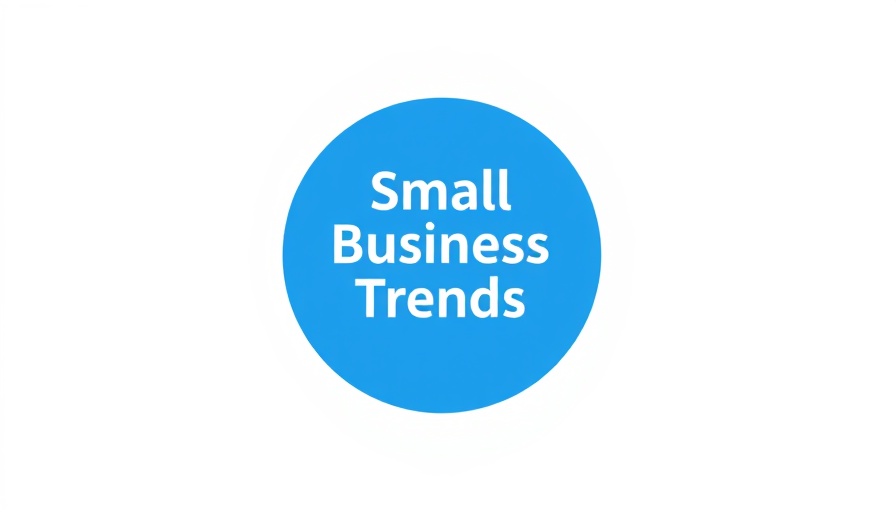
The Rise of No-Code AI Tools: Empowering Every Innovator
The no-code movement has emerged as a revolutionary approach to app development, removing barriers that once limited software creation to skilled developers. With the integration of artificial intelligence (AI), these platforms offer fantastic opportunities for individuals and teams to design digital solutions without traditional coding knowledge. This democratization of technology enables anyone with an idea to transform it into a usable application, with minimal technical expertise.
Exploring Top Platforms for No-Code AI Development
This article discusses four standout no-code AI platforms: Zapier Interfaces, Famous.ai, Akkio, and Backendless, each providing unique features tailored to specific needs. These platforms are reshaping how apps and websites are developed, making powerful tools accessible to a broader audience, including startups, non-profits, and SMEs.
1. Zapier Interfaces: Best for Workflow Automation
Zapier Interfaces is best known for transforming the power of automation into tangible web applications. Utilizing a library of over 8,000 integrations, users can convert their automated workflows into internal tools that streamline business processes. Teams can visualize data dashboards, create customer portals, and develop applications without writing a single line of code.
This platform is particularly effective for businesses that already leverage Zapier and seek to enhance their operational efficiency. However, it's worth highlighting that while powerful for internal business applications, it may not be the best fit for high-customization or consumer-facing projects.
2. Famous.ai: Generating Full-Stack Applications in Minutes
Perhaps one of the most innovative platforms, Famous.ai, allows users to describe their desired application in plain language and receive a fully functional app in minutes. This platform excels in leveraging natural language processing to create web and mobile apps while ensuring back-end logic and database structures are also managed. This capability significantly reduces the time and technical know-how required to launch digital products.
The collaborative aspect of Famous.ai allows multiple team members to participate in the app-building process, fostering agility and enhancing alignment. This makes it an ideal solution for startups and internal teams who value rapid iteration and decisive action.
3. Akkio: Powering Analytics with No-Code Solutions
For users eager to implement predictive analytics without a coding background, Akkio stands out as an excellent option. This platform focuses not just on app creation but on providing actionable insights through data analysis. With a user-friendly interface, Akkio allows users to input their data and receive predictive models and visualizations.
Businesses can leverage these insights to inform marketing strategies or operational improvements, ultimately optimizing their ROI without needing a data science team.
4. Backendless: Full-Stack Development Made Simple
Lastly, Backendless streamlines full-stack development while integrating AI capabilities for automation. This platform allows users to build and deploy applications quickly, combined with the flexibility to scale as needed. As a robust choice for developers looking to create consumer apps and enterprise solutions, Backendless provides a comprehensive set of tools that aid both tech-savvy users and beginners.
The Future of No-Code AI Platforms
The future points towards an increasingly digital landscape where no-code platforms will play a critical role in innovation. The demand for faster, more efficient solutions will only elevate the use of platforms like Zapier Interfaces and Famous.ai, positioning businesses to thrive in a competitive marketplace. Startups and small businesses that harness this technology will have the upper hand, reducing overhead costs and speeding up product development.
Decisions You Can Make with This Information
With a myriad of options available, it’s essential for teams to evaluate their specific needs. Do you require a workflow-oriented tool (like Zapier), a collaborative AI builder (Famous.ai), or strong analytics capabilities (Akkio)? Understanding your business objectives will guide your choice, ensuring that you adopt the tool that aligns best with your vision.
Actionable Insights on Implementing No-Code AI Solutions
Embracing no-code AI platforms can significantly impact your operational efficiency. Start by identifying your business workflows or app requirements. Choose one platform to pilot its features over a specific project. As your team becomes familiar with the technology, gradually expand usage to more complex projects, ensuring a smooth transition to adapting and optimizing workflow.
In conclusion, staying informed about AI advancements and no-code solutions will empower individuals and businesses to innovate and adapt effectively. As we enter a digital future, the ability to craft solutions tailored to specific needs is more crucial than ever. Engage with these platforms to elevate your business strategy and transform ideas into reality.



Write A Comment